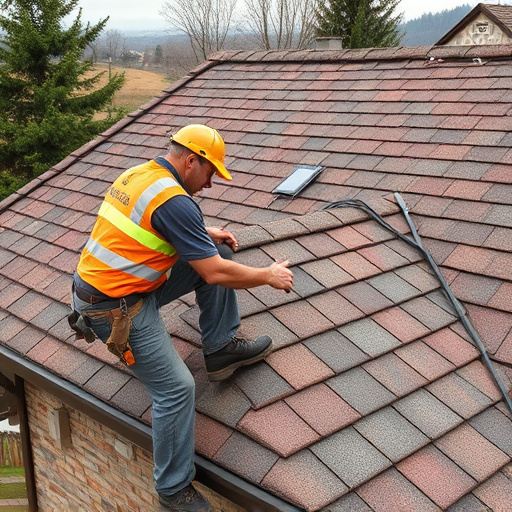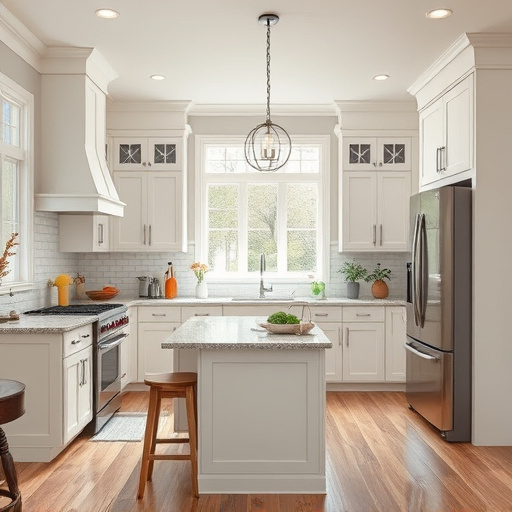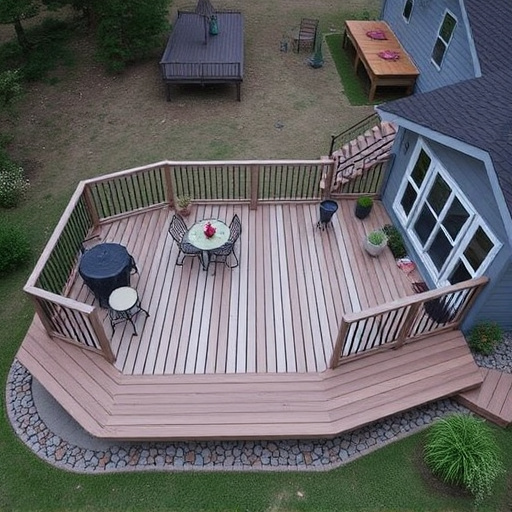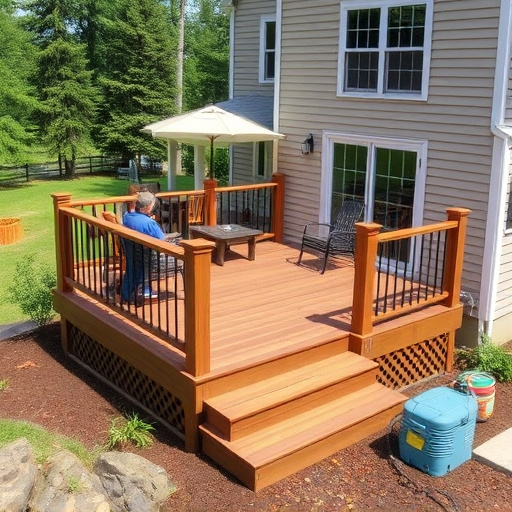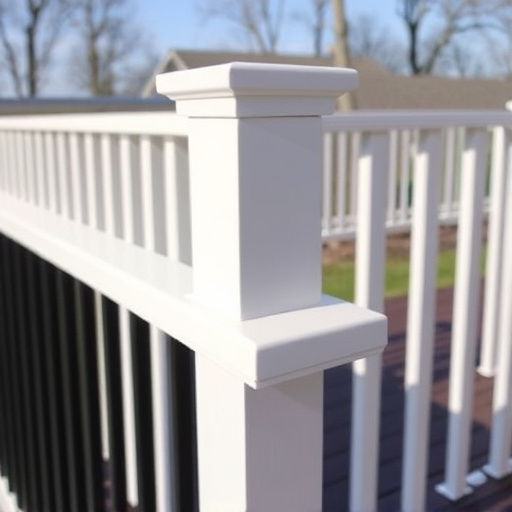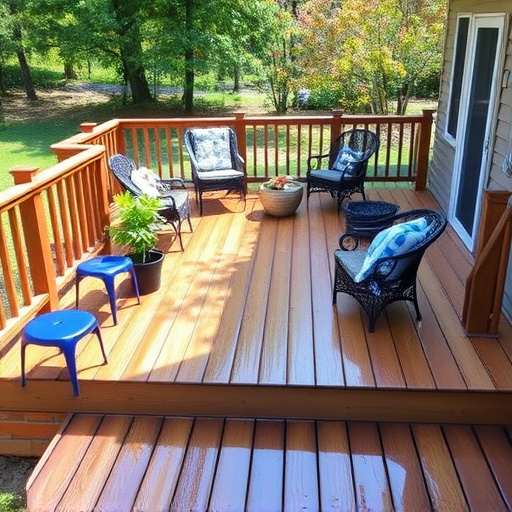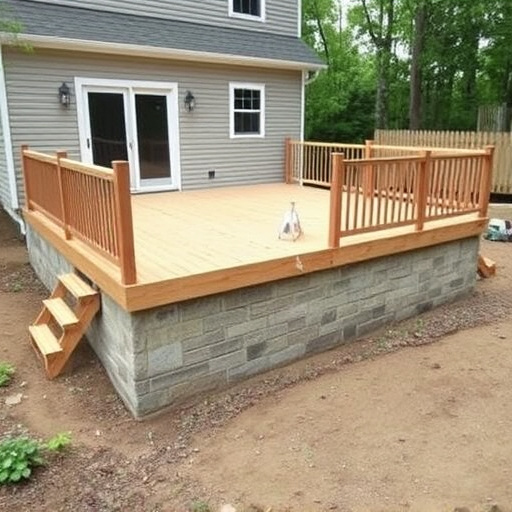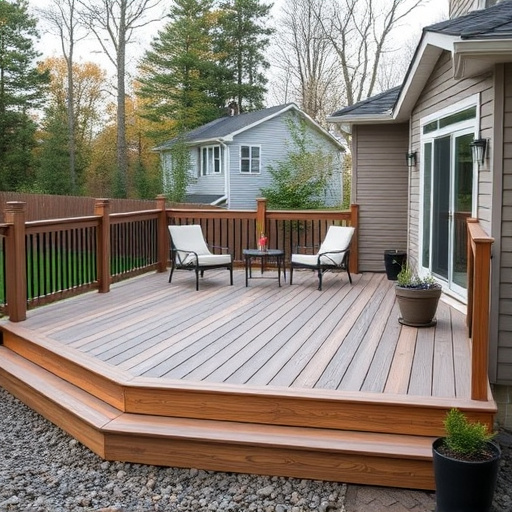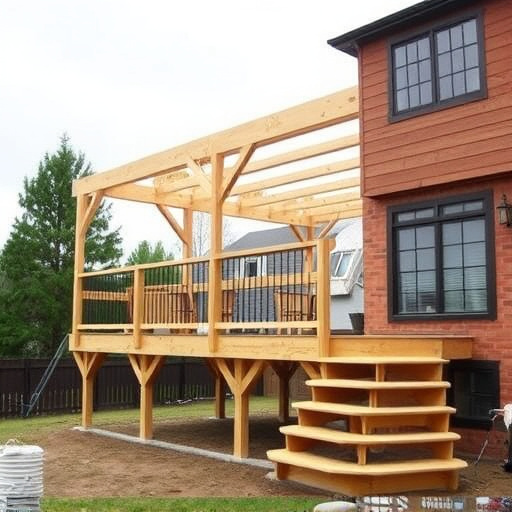Designing a multi-level deck requires careful material selection for strength and visual appeal, balancing budget, climate, and maintenance levels. Wood offers classic beauty and versatility, with softwoods like cedar and pine being cost-effective, while hardwoods like ipe and teak provide superior durability. Composite materials are low-maintenance alternatives, blending wood fibers with plastic for enhanced weather resistance and diverse design options. Expert advice from siding services or roof consultants is crucial for complex builds, ensuring a long-lasting, safe outdoor space that meets functional and aesthetic needs.
Building a multi-level deck is an exciting project that enhances outdoor living spaces. Choosing the right materials is crucial for durability, aesthetics, and long-term performance. This comprehensive guide explores the best options for constructing robust and visually appealing multi-level decks. From selecting wood species to understanding composite materials and metal frameworks, we cover it all. Additionally, we delve into decking options for different levels, safety considerations, and finishing touches, ensuring your deck is both functional and low maintenance.
- Choosing Materials for Multi Level Deck Structure
- – Wood: Types and benefits of using wood for multi level decks
- – Composite materials: Advantages and variety in composite decking options
Choosing Materials for Multi Level Deck Structure
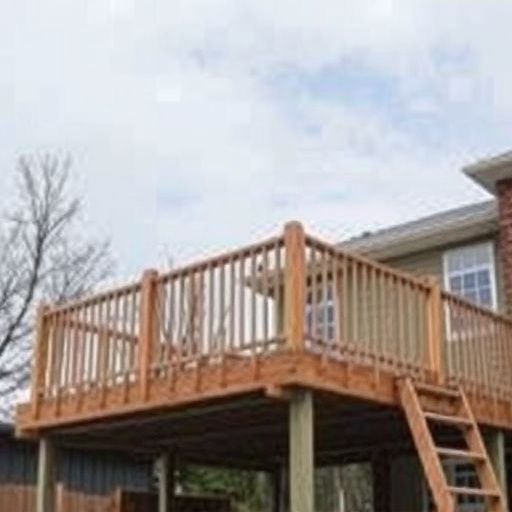
When designing a multi-level deck, selecting the right materials is paramount to ensure both structural integrity and aesthetic appeal. The choice of materials should align with your project’s specific needs, including budget, climate, and desired maintenance level. For instance, composite decking offers low maintenance and durability, making it ideal for busy homeowners who want a hassle-free outdoor space. On the other hand, natural wood provides a classic look but requires regular cleaning and sealing to resist weather damage.
Consideration should also be given to the deck’s structural components, such as joists and beams. Steel or treated lumber are excellent choices for load-bearing elements due to their strength and longevity. Additionally, incorporating slip-resistant surfaces is crucial for safety, especially on higher levels, where the risk of falls increases. The choice of materials should thus be a balanced decision that meets both structural requirements and safety standards, potentially involving professional siding services or roof consulting for expert advice, especially in complex multi-level deck builds, and ensuring a long-lasting and enjoyable outdoor living space.
– Wood: Types and benefits of using wood for multi level decks
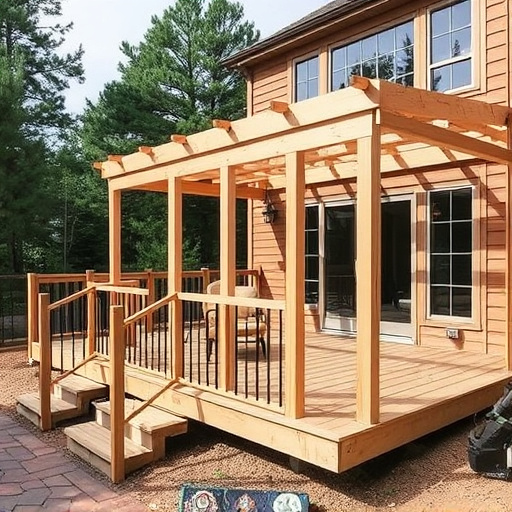
Wood is a timeless choice for multi-level deck builds, offering both aesthetic appeal and functional advantages. When it comes to types, several options are readily available, each with its unique characteristics. Softwoods like cedar and pine are popular due to their affordability and ease of installation. Hardwoods such as ipe or teak, while more expensive, provide superior durability and resistance to the elements, making them ideal for outdoor spaces that see heavy use.
Incorporating wood into multi-level deck projects offers several benefits. It lends a natural beauty and warmth to the space, seamlessly blending with surrounding landscapes. Moreover, wood’s versatility allows for creative design options, from traditional to modern aesthetics. Additionally, proper maintenance can extend the lifespan of wooden decks, making them a sustainable choice in the long run, especially when compared to other materials like concrete or composite, which may require more frequent replacement.
– Composite materials: Advantages and variety in composite decking options
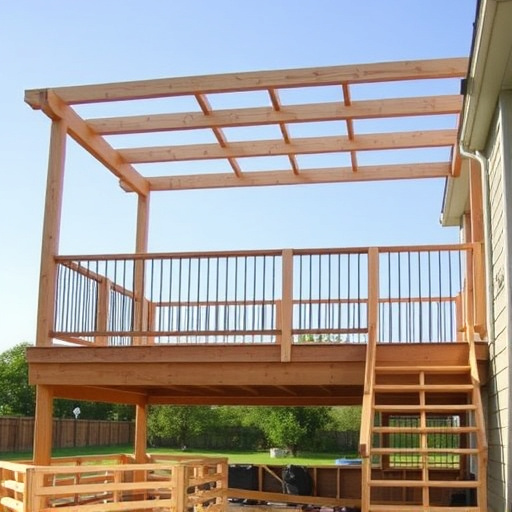
Composite materials have emerged as a popular choice for multi-level deck builds due to their durability and low maintenance properties. Unlike traditional wood decking, composite options are made from a blend of wood fibers and plastic, offering a superior alternative that can withstand extreme weather conditions and reduce the need for frequent repairs. This makes them an excellent investment for homeowners looking to enhance their exterior home improvements without the hassle of regular maintenance.
The variety in composite decking options allows for versatile design possibilities. From intricate patterns to realistic wood-like textures, these materials cater to diverse aesthetic preferences. Furthermore, composite decks offer improved slip resistance, ensuring safer walking spaces, especially in residential areas where kids and pets play. When considering exterior home upgrades, including roof repair or replacement, composite decking provides a seamless integration with residential roofing systems, contributing to the overall curb appeal and long-term value of your property.
When building a multi-level deck, selecting the right materials is key. Both wood and composite options offer unique advantages, catering to different preferences and needs. Wood provides natural beauty and versatility, while composite materials stand out for their low maintenance and durability. For a well-crafted, long-lasting multi-level deck, considering these material choices is essential to ensure a functional and aesthetically pleasing outdoor space.

